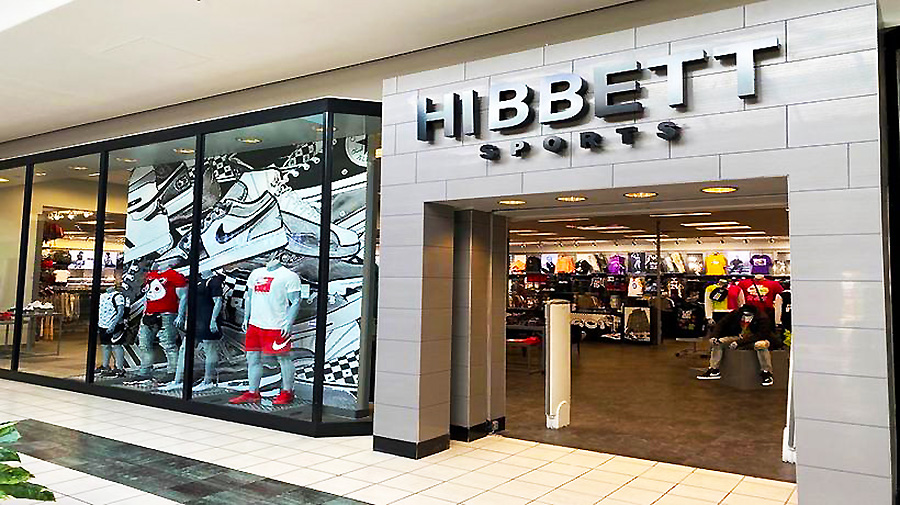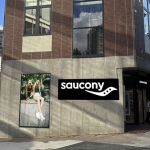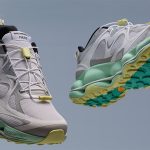Hibbett Inc. raised its outlook for the year after reporting its fifth straight robust quarter that topped Wall Street’s targets.
“This quarter’s financial performance was a strong outcome for the company,” said Mike Longo, CEO and president, on a call with analysts. “The third quarter is always the hardest of the year. So we’re very proud of the results we’re able to deliver.”
In the quarter ended October 30, sales grew 15.2 percent to $381.7 million, surpassing Wall Street’s consensus target of $360 million. Compared to the third quarter of 2019, sales leaped 38.6 percent.
Comparable sales climbed 13.0 percent year-over-year and surged 37.4 percent on a two-year basis compared to the 2019 third quarter.
Net income was essentially flat at $25.2 million, or $1.68 per share, against year-ago earnings of $25.3 million, or $1.47, that were boosted by heightened demand in the early stages of the pandemic. Results topped Wall Street’s consensus estimate of $1.62.
Hibbett said sales gains in the latest quarter were primarily attributable to increased market share, improved customer engagement and availability of in-demand products. By comparison, year-ago growth benefited from market disruption, improved new customer retention, continued strength in omnichannel adoption, the availability of in-demand products and stimulus payments.
Longo said that despite the “much-publicized global supply chain problems,” Hibbett managed to grow inventory at the quarter’s end by nearly 23 percent versus the prior year and 19 percent since the end of Q2.
Longo cited four factors that continue to drive results and expected to continue to do so in the future. They include:
- Continued improvement to its business model, including its ability to secure a “highly coveted selection of merchandise,” enhanced customer service and further developing its omnichannel experience;
- Investments in the consumer, including store remodels, new store design and website innovation;
- New customer retention aided by improvements to its loyalty and marketing programs, including investments in social media outreach;
- Capitalizing on competitive closures and the reduction in the distribution in the marketplace of key brands, referencing steps by Nike, Adidas and others; and
- Improved inventory position from efforts by its teams to overcome supply chain disruptions in coordination with key brand partners.
The Benefits Of Focusing On Underserved Markets
Longo highlighted how Hibbett’s focus on positioning stores in underserved communities has helped the retailer secure products from major vendors in an inventory-constrained environment. The more limited competition also aided its profitability and reduces promotional pressures. In the past, Longo has cited the benefits of the liquidation of Stage Stores and store closures at JC Penney.
Noting that such information hasn’t previously been disclosed, Longo noted that as of January 2022, Hibbett is now forecasting that better than half of its stores will have no competition from retailers that carry products from its key brands within three miles. Expanding that further, almost 70 percent of its stores by early 2022 will have one or fewer competitors. Longo said, “We believe that this will be a significant factor for our success going forward.”
By channel, brick and mortar comparable sales in the quarter advanced 11.6 percent year-over-year and 31.6 percent on a two-year basis. E-commerce sales increased 22.3 percent year-over-year and 37.4 percent compared to the 2019 third quarter. E-commerce represented 14.0 percent of total sales for the latest quarter compared to 13.2 percent a year ago.
Fleece Tops And Bottoms, Classics And Basketball Footwear Among Top Sellers
By categories, apparel, footwear and team sports were all up double-digits year-over-year.
Jared Briskin, EVP and chief merchant, said on the call, “Our focus on toe-to-head merchandising continues to drive results as we saw strong cross-category connectivity drive improvement in items per sale and average ticket with a very strong back-to-school season across all categories and genders when compared to last year’s third quarter.”
When compared to the 2019 third quarter, all genders and categories were up double-digits with kids surging just below 50 percent and women’s more than doubling.
Briskin said the improvement is a direct result of the shift in its merchandise organization from a traditional category structure of footwear, apparel and team sports to establishing leadership positions over men’s, women’s, kids, and its City Gear business.
Apparel sales grew year-over-year in the mid-teens. Drivers included color and material-connected tops and bottoms, sneaker connectivity and tall-to-small connectivity from adults to kid sizing.
Said Briskin, “From the athletic brands, we continue to see strong demand for lifestyle products, especially fleece tops, fleece bottoms, and t-shirts. Fashion brand performance continues to be very strong. Fleece tops and bottoms were drivers in the category but our performance in denim was the standout. We made a significant investment in denim and supported the investment through a strong cross-functional effort with our visual operations and marketing teams, leading to a fantastic result.”
The licensed business “continued to perform extremely well,” benefiting from efforts by Hibbett’s merchants to connect licensed products back to sneakers and the chain’s seasonal stories. The fan business also improved in the quarter as some local teams, including the Atlanta Braves and Georgia Bulldogs, performed well.
The team sports category grew in the high-twenties. In accessories, socks, sneaker accessories, bags, and sunglasses had strong results during the quarter to help offset declines in pandemic-related items such as masks.
Footwear Sales Up In The Low-Teens
“Demand for classics and basketball footwear remains incredibly strong and in short supply across the market,” said Briskin. “Running continues to perform well as more consumers continue to explore the category. Sandals and slide showed significant growth in the quarter as we broadened our assortment and investment. Casual fall footwear was also exceptionally strong during the quarter.”
Specific to footwear and apparel, all genders were positive. The gains were led by women’s, up mid-twenties; kid’s, up low-twenties; and men’s up mid-single-digits.
Gross margins in the third quarter eroded 200 basis points to 36.3 percent from 38.3 percent a year ago. The decline was primarily driven by increased freight and transportation costs, which more than offset leverage from store occupancy expenses. Excluding adjustments to inventory valuation reserves in the prior-year quarter, gross margins were 38.1 percent in the year-ago period.
SG&A expenses were reduced 90 basis points to 25.2 percent of sales. The decrease was primarily the result of leverage gained from the strong sales increase and improved labor management. Excluding certain City Gear acquisition and integration expenses that occurred last year, the SG&A expense rate of 25.2 percent decreased 80 basis points from an adjusted SG&A expense rate of 26.0 percent.
Inventories Up 22 Percent
Inventory at the end of the third quarter was $258.8 million, a 22.8 percent increase compared to the prior year’s third quarter. Aged inventory remains at a record low both in dollars and as a percent of sales.
“We are very confident with our inventory position to deliver the results outlined in our guidance and are incredibly proud of our efforts to improve our inventory position in the current environment,” said Briskin. “We accomplished this by working closely with our vendor partners to secure a substantial increase in our order book, securing incremental product from our vendor partners in season, improving our priority with our vendor partners regarding shipping and increasing our capacity by more than 50 percent within our own supply chain.”
He said Hibbett expects to end the fiscal year with year-over-year inventory growth in the mid-to-high single-digit range and “will continue to prioritize inventory growth and consumer experience over cost.”
Looking to the first quarter of 2022, Briskin said Hibbett expects the supply chain “to remain challenged and very fluid. We’re working tirelessly to mitigate these challenges. While we continue to believe the challenges will persist and achieving our optimum level of inventory might be a challenge, we are expecting to deliver a significant increase in new receipts compared to the first quarter of fiscal 2022.”
Fiscal 2022 Outlook
Given the strong year-to-date performance, Hibbett updated its financial guidance for the fourth quarter and the year. The updated guidance calls for:
- Comparable sales in the fourth quarter to be in the positive high-single-digits, which implies full-year comp sales percentage growth in the positive high-teens. Previously, guidance called for full-year comp gains in the positive mid-teens;
- Gross margin in the fourth quarter is expected to be lower in the fourth quarter year-over-year but to be favorable to both GAAP and adjusted fiscal 2021 gross margin on a full-year basis, which is consistent with previous guidance;
- SG&A is expected to decline as a percent of sales in the fourth quarter compared to a year ago and is also anticipated to decline as a percent of sales in comparison to both GAAP and adjusted SG&A in fiscal 2021 on a full-year basis, which is consistent with previous guidance; and
- EPS for the fourth quarter is projected in the range of $1.85 to $2.05, implying full-year EPS in the range of $11.70 to $11.90. Previously, full-year EPS was expected in the range of $11.00to $11.50.
Photo courtesy Hibbett Sports
















